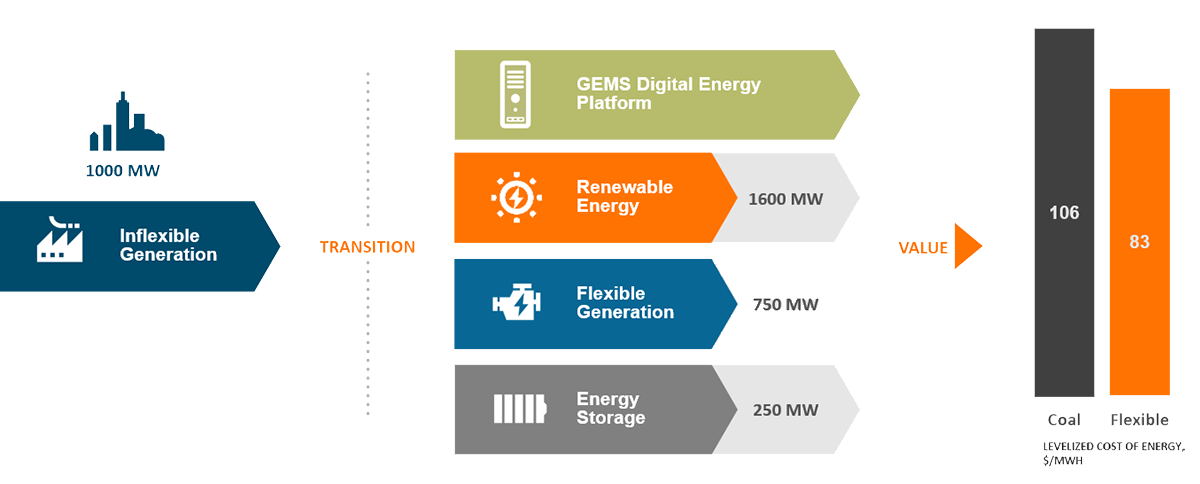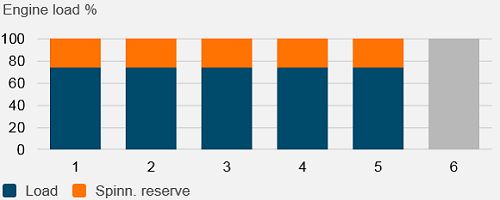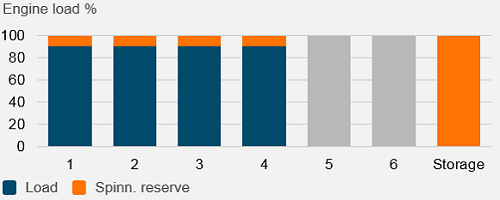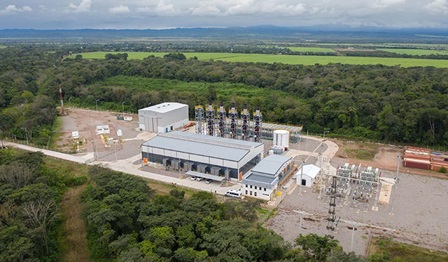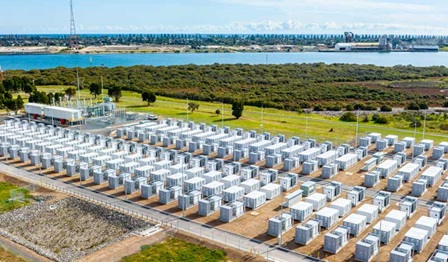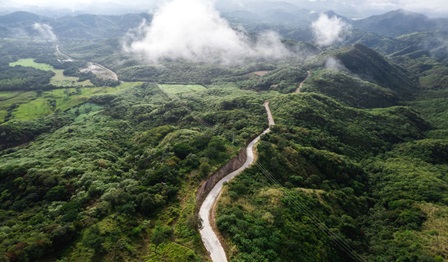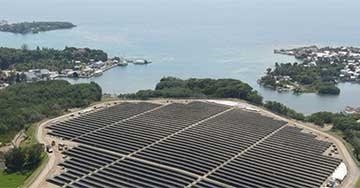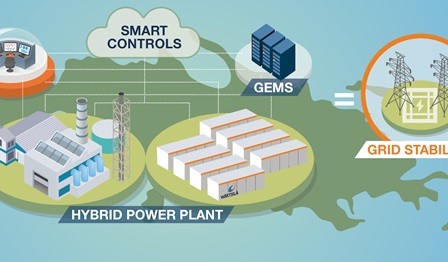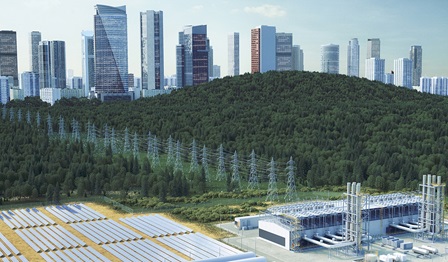
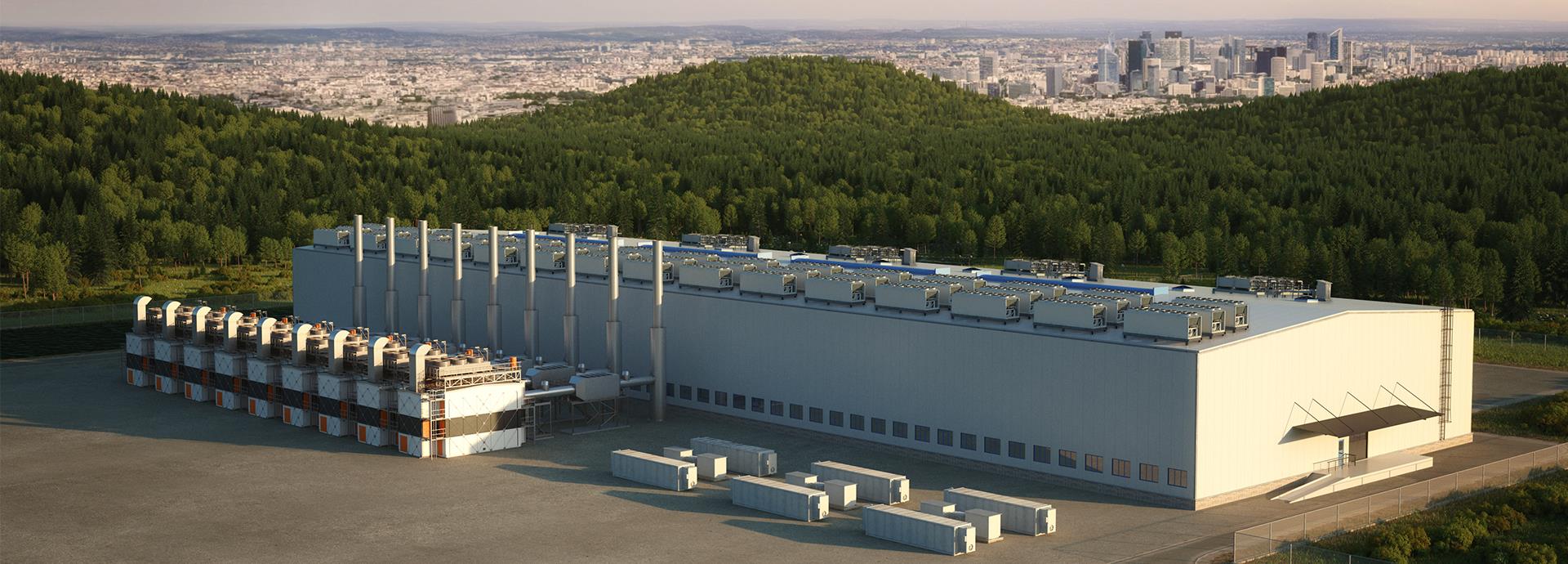
Hybrid power plants
The rapid fall in the cost of renewable energy in recent years means it is now the most affordable way to generate electricity in many parts of the world. At the same time, the need for a radical reduction and even reversal of carbon emissions is driving cities, corporations and utilities to set ambitious targets for moving towards 100% renewable energy.
Wärtsilä’s innovative hybrid energy solutions support and accelerate this transition towards a clean energy future.
They combine energy storage and a flexible engine power plants which can be integrated with renewable assets, providing considerable potential for fuel and cost savings – especially in remote areas such as island and isolated grids where fuel prices tend to be high.
The value of the energy produced by a hybrid power plant can be enhanced with the Wärtsilä GEMS Digital Energy Platform, which uses data-driven intelligence to monitor, control and optimise energy production at both site and portfolio levels.
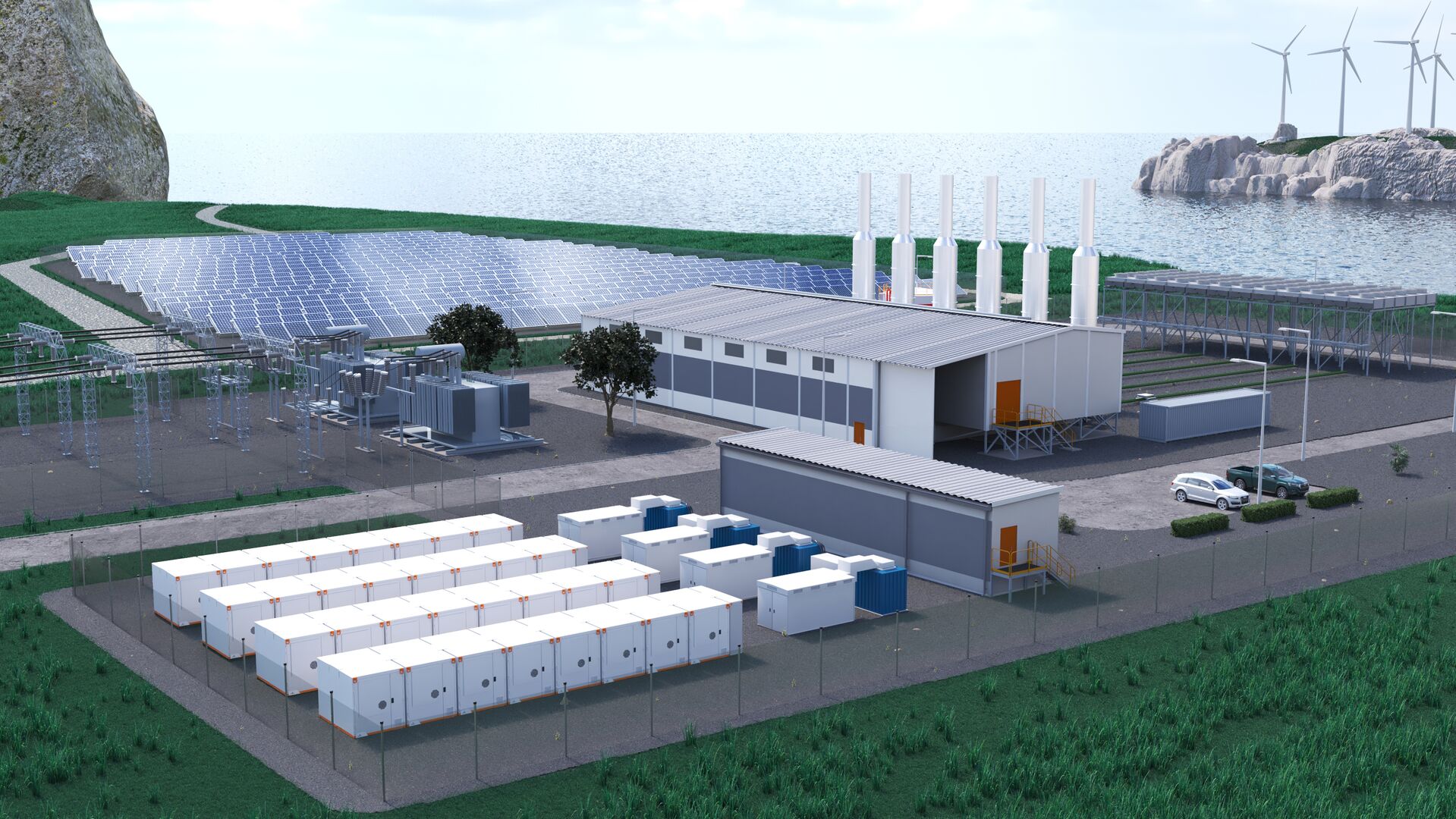
Reduce fuel costs and emissions with energy storage
Adding renewable generation capacity to a power system isn’t the only way to achieve cleaner electricity production. According to studies carried out by Wärtsilä, adding energy storage to a gas power plant can reduce its fuel consumption and therefore emissions by as much as 6%.
Sample applications
- Instant power
- Power quality – frequency and voltage control
- Spinning reserve replacement
- Ancillary services
- Black-start capability
Benefits
- Optimised plant operation
- Fuel savings and emission reduction
- Maintenance optimisation and cost savings
- Regulatory compliance
- Enhanced dispatchability
- Optimised integration of renewables and additional generation assets
GEMS Digital Energy Platform
The GEMS digital energy management software platform is built with end-to-end grid management capabilities. The platform uses machine learning and historic and real-time data analytics to optimise the asset mix, and enables customers to remotely monitor, operate, identify and diagnose assets safely, reliably and flexibly.
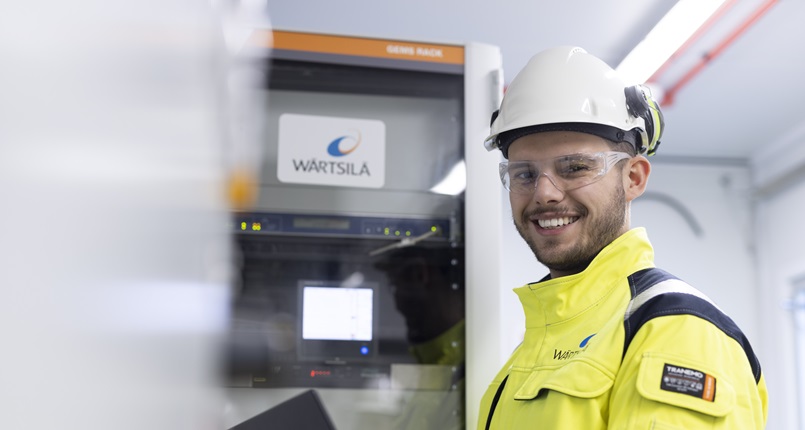
Wärtsilä’s hybrid power system modelling takes into account the following parameters:
- Seasonal and hourly variations in electricity demand
- The cost, availability and hourly and seasonal variations of wind and solar energy
- The availability of technologies and fuels – such as synthetic fuels and biofuels – that can be used to balance the variable output of renewable sources
- The capital costs of different technologies
